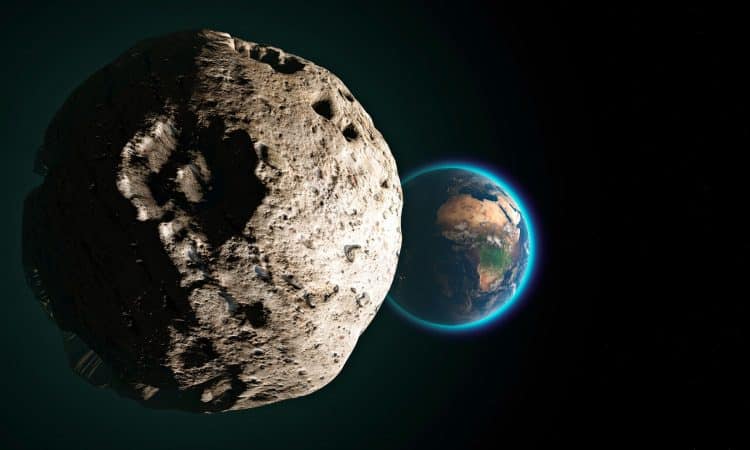
Astronomers have good news about the potentially dangerous asteroids lurking near our planet: There aren’t as many of them as we thought.
Using the Zwicky Transient Facility (ZTF) telescope to survey large swathes of the sky, a team of researchers led by the University of Maryland investigated a stream of space debris known to float near Earth called the Taurid swarm.
The Taurids, believed to be the remnants of a large comet called Encke, can be seen from Earth as highly visible meteor showers in October and November.
This region has long intrigued astronomers due to its potential to harbor but researchers have been unable to confirm or deny the existence of such hazards – until now.
“We took advantage of a rare opportunity when this asteroid swarm passed closer to Earth, allowing us to more effectively search for objects that could pose a threat to our planet,” said Quanzhi Ye, who supervised the project and is a researcher assistant in the Astronomy Department of UMD.
A stream of space debris floating near Earth
“Our findings suggest that the risk of being from Taurid clusters is much lower than we thought, which is good news for planetary defense.”
Before this study, researchers speculated that the Tauride clusters contained a considerable number of large, kilometer-class space rocks left behind by a large object, possibly up to 100 kilometers across. Large objects can cause regional damage if they hit Earth, like the Chelyabinsk asteroid that hit Russia and injured more than 1,600 people in 2013. Even larger objects can cause extinction-level events, like the asteroid that killed the dinosaurs now over 66 million years, he writes.
“Fortunately, we found that there are likely to be only a handful of asteroids—perhaps as few as nine to 14 of them—that fall into this large size class in the cluster,” explained Ye.
“Judging by our findings, the parent object that originally created the clusters was probably closer to 10 kilometers in diameter, rather than a massive object 100 kilometers across. While we still need to be vigilant about asteroid impacts, we can probably sleep better knowing these results.”
The need for constant vigilance
According to Ye, the taurid swarms hold important clues about planetary evolution, particularly because of its connection with Comet Encke. Encke, which has one of the shortest orbital periods of any known comet at just 3.3 years, is also unusually large and dusty for a short-period comet. Given all the available evidence, scientists believe that Encke has undergone significant fragmentation in the past—and may continue to similarly disintegrate in the future.
“Studying the Taurid cluster helps us understand how small celestial bodies, , form and break up over time,” said Ye. “Our research has implications not only for asteroid detection and planetary defense, but also for our broader understanding of solar system objects.”
While the study’s results are reassuring, the team believes they also underscore the need for continued vigilance and improved detection capabilities. Using advanced facilities such as the ZTF telescope, which can efficiently conduct vast surveys of the sky and track potentially dangerous near-Earth objects, the researchers plan to conduct follow-up observations in the coming years when the Taurid asteroid swarm passes by again near the Earth.

